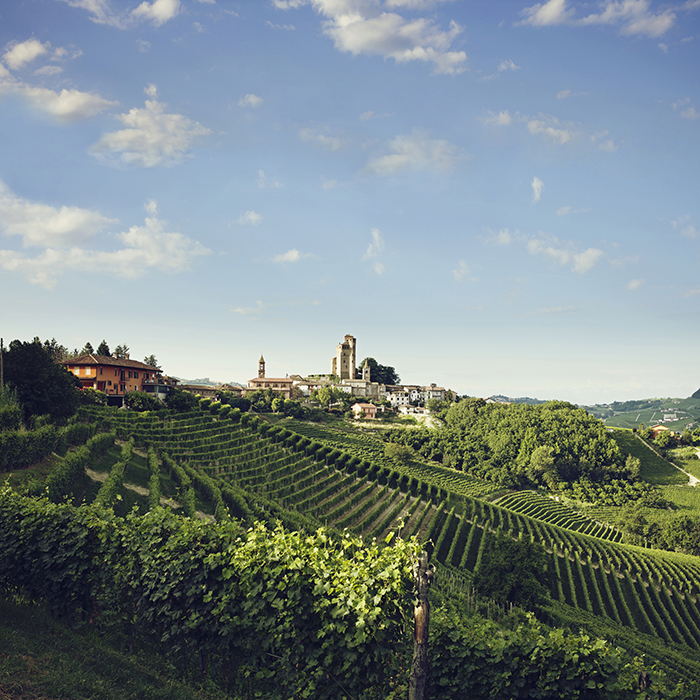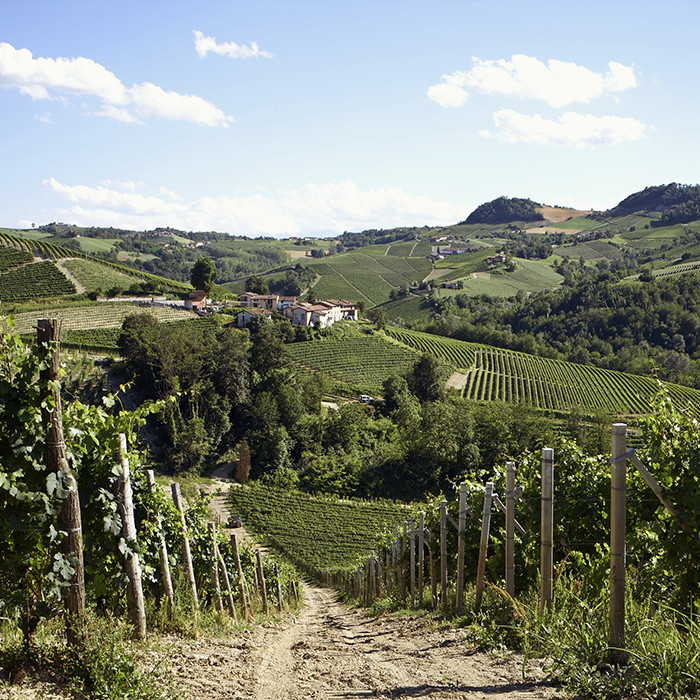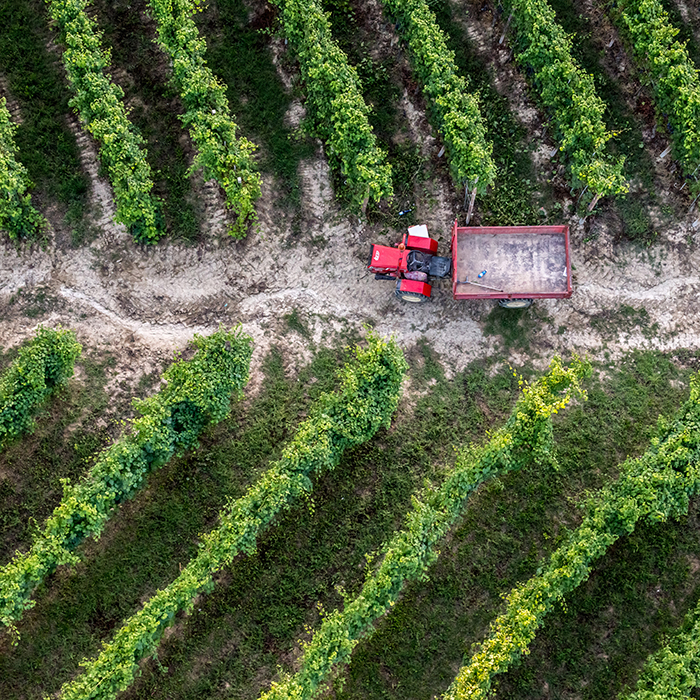Barolo 2016 and Barbaresco 2017
Author: Matt Smith

This year’s Piedmont offer presents a fascinating voyage through the villages of the Langhe hills, focusing on two of Italy’s most thrilling and noble wines: Barolo and Barbaresco. It is a journey of contrasts and a chance to experience Nebbiolo’s many personalities through the distinctly different lenses of the 2016 and 2017 vintages.
Plenty of excitement will no doubt surround the much-lauded 2016 Baroli and the hype is certainly justified. Near-perfect vintage conditions allowed the grapes to ripen steadily with everything in balance and the growers were able to harvest their healthy crops as late as possible.
During my final buying trip in December last year, I was amazed, not only by the sheer consistency of quality, but also the individuality which the wines possess. For enthusiasts eager to understand the nuances of the individual villages, this is the vintage to explore.
The 2016 vintage in Barolo is a case of the right place at the right time. This great vintage comes when many producers are in their prime, now comfortable with their own personal style, allowing the true character of the vintage to shine. The results perfectly convey the nobility and potential of Nebbiolo: these are spectacular wines, characterised by great luminosity, freshness and elegance.
This year we are delighted to welcome two new producers to our range: Luigi Vico from Serralunga, a commune which has fared particularly well in ’16, and Bruna Grimaldi from Grinzane Cavour, whose vineyards cover their home village together with Roddi, La Morra and Serralunga.
In contrast to the consistent, late harvest of ’16, ’17 was extremely dry, hot and one of the earliest on record. But those expecting jammy wines lacking in precision will be very pleasantly surprised. The wines are certainly more robust in structure and colour, an undeniable result of the low yields and high skin-to-juice ratio of the berries. But this is Nebbiolo after all, and a pattern of cool night-time temperatures resulted in bright, vibrant wines, very much in balance, with plenty of acidity. These wines illustrate just how adept growers have become at protecting their vines from heat – working with the changing climate.
Barbaresco legally spends one year less in oak and gives a first opportunity to taste some great wines of the ’17 vintage. Lesser-known in comparison to Barolo, this region is no less captivating – and we are thrilled to be offering two new producers: Luigi Giordano and Fletcher Wines, both from the town of Barbaresco itself.

Barolo 2016
For all our producers 2016 was a joyful experience – relaxed, effortless and free of significant climatic complications. It was certainly one of the longest-lasting growing seasons in recent years. The vegetative cycle initially got off to an early start due to a relatively mild and dry January.
However, from the end of February to the end of March, the temperatures dropped, delaying the vegetative development, while plenty of rain provided the soils with good reserves of water. April remained chilly but the rains subsided (in contrast to the warmer, damper April in ’15). This pattern continued into May with temperatures rarely rising above the 10-year average for the region.
June remained relatively cool and consistent, without any of the heat spikes of the previous year. Temperatures began to rise steadily in July, but a couple of well-timed rain showers, together with a notable diurnal swing, helped to keep things fresh and in balance. Unfortunately, minor localised hail at the end of July affected some producers, including Trediberri whose Rocche dell’Annunziata and Capalot vineyards in La Morra lost some fruit.
Following a cool, subdued second half of August, directly after the Ferragosto (a public holiday on 15th August), September brought welcome dry and sunny weather. The combination of warm, bright days and fresh, cool evenings allowed for steady, relaxed ripening of the Nebbiolo. Sugar levels developed gradually and in sync with ripening of the seeds, while acidity and aromatics were preserved. This allowed growers to wait and harvest up to the start of November, a full week later than in ’15. Many producers noted the presence of thicker skins compared to ’15 and chose to extend their macerations, always the sign of high-quality grapes.
The results have been unanimously appreciated by the producers. Maria Teresa Mascarello sees ’16 as a return to the vintages of the past – warm but not hot, with a long, slow ripening phase, with a later harvest allowing cooler fruit to reach the winery. Manuel Marchetti at Marcarini feels his wines are similar in many ways to his ’15s, but that the lower average temperatures and lack of heat spikes yielded even greater finesse and freshness. Nicola Oberto at Trediberri feels the lower temperatures and late harvest resulted in one of the most amazing vintages of the last decade or more, a view shared by Ale and Mauro Veglio and Davide Rosso.

Barbaresco 2017
In stark contrast to the 2016 harvest, ’17 will be remembered for its lofty temperatures, a severe lack of rain and a very early harvest period. The winter was mild, with only a few flurries of snow leading to a spring marked by light rain and above-average temperatures. This facilitated rapid vegetative development, which immediately proved to be ahead of time and continued to be so for the rest of the season.
A sharp drop in temperatures towards the end of April brought with it sleepless nights amongst growers, with spring frosts affecting vineyards at the bottom of valleys and on some of the cooler slopes. May saw the beginning of an extended period of fine, dry weather, allowing excellent plant health and lack of disease pressure. The season was one of the driest on record, with just 280 millimetres of rain recorded between March and October (in comparison to an average of 550 to 600 millimetres).
Summer was very hot with temperatures consistently exceeding the 10-year average. Unlike other hot years such as 2003, however, there remained good variation between day and night temperatures, which allowed acidity levels to be maintained. Matteo Rocca of Luigi Giordano in Barbaresco believes that – as a result of previous hot years – they were better prepared to deal with the effects of heat through experience in the vineyard. Growers focused on protecting the clusters, keeping more leaves and turning the soil closest to the vine to avoid evapotranspiration of the water.
September saw the weather cool down, and continued strong diurnal variation, together with a small amount of much-needed rain to rebalance the berries.
Harvest was also one of the earliest on record, with some producers starting to pick Nebbiolo in the first week of September, and everything finished by mid-October, a full two weeks earlier than the average.
The combination of heat and lack of water resulted in a small crop (15 to 20% down on average) of compact, thick-skinned berries – exceeding many growers’ expectations in quality. The wines are concentrated and age-worthy, with colour and tannins aplenty, but with surprising acidity and freshness.
Explore our offer at bbr.com/piedmont2020


